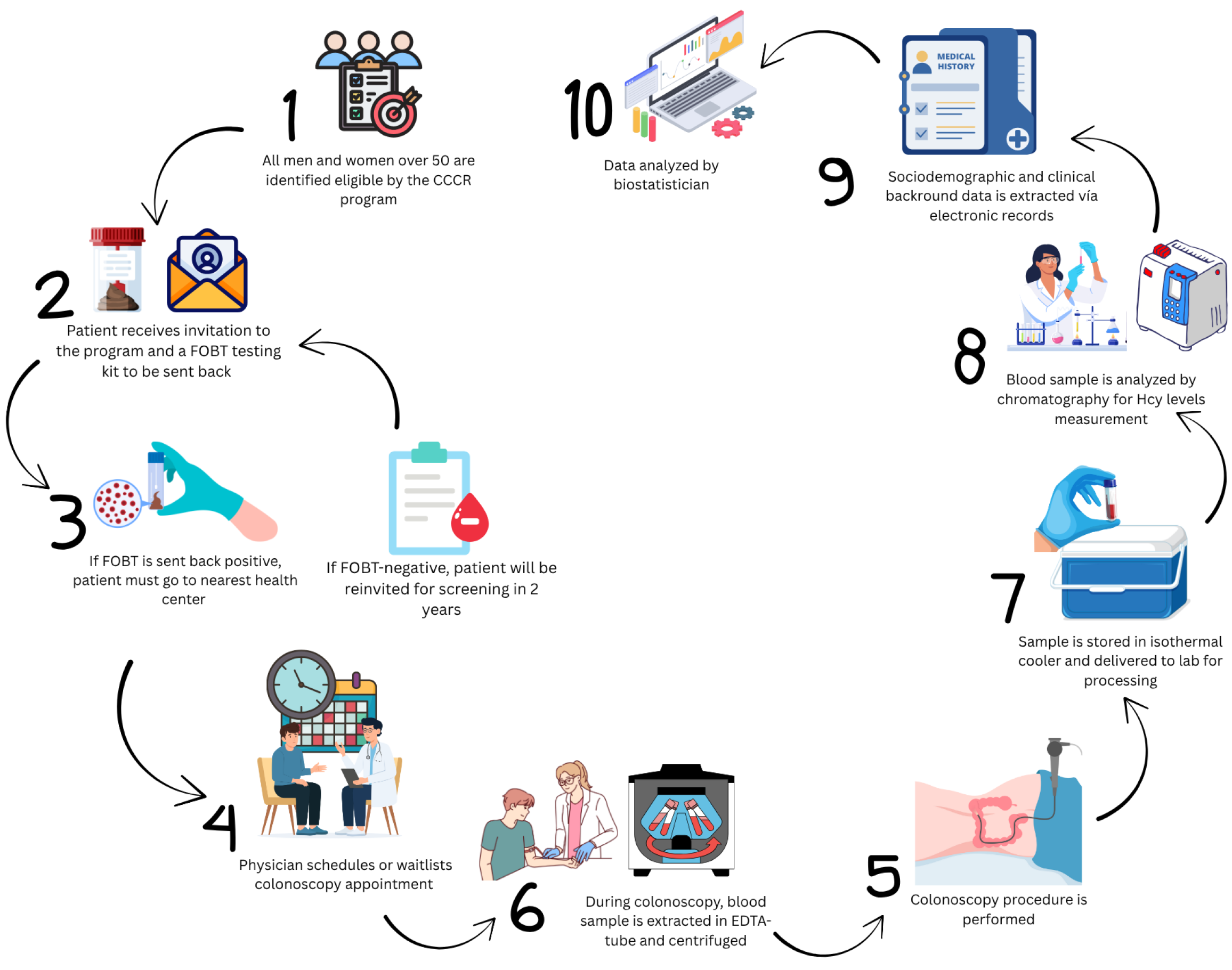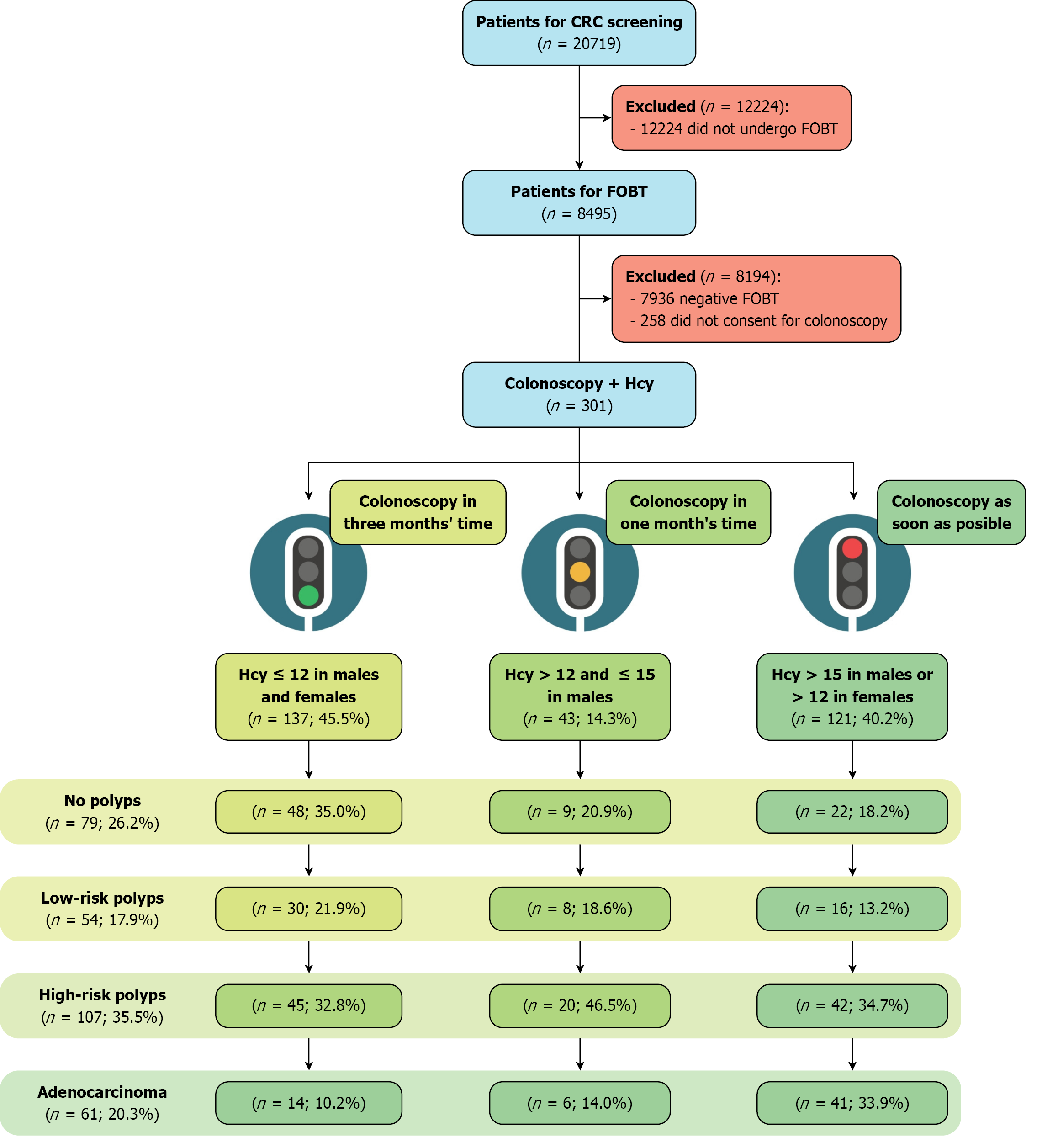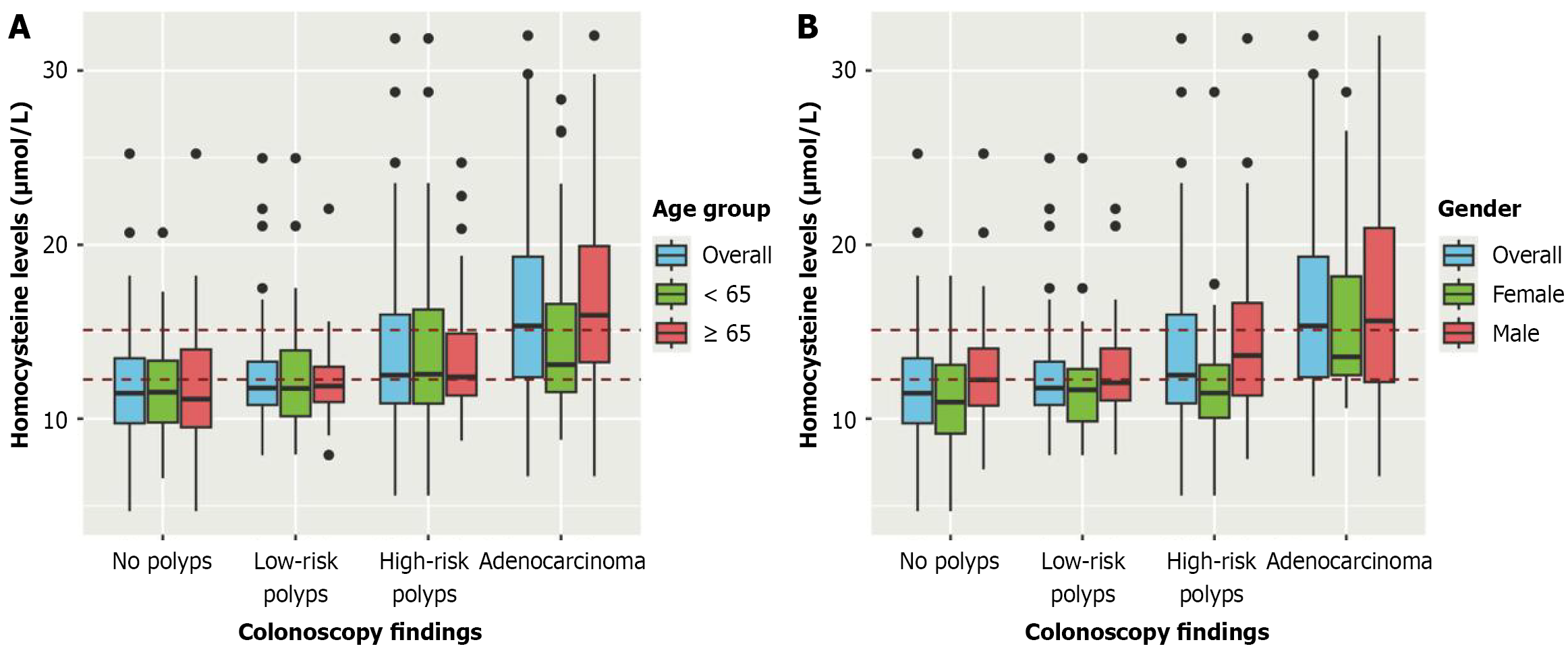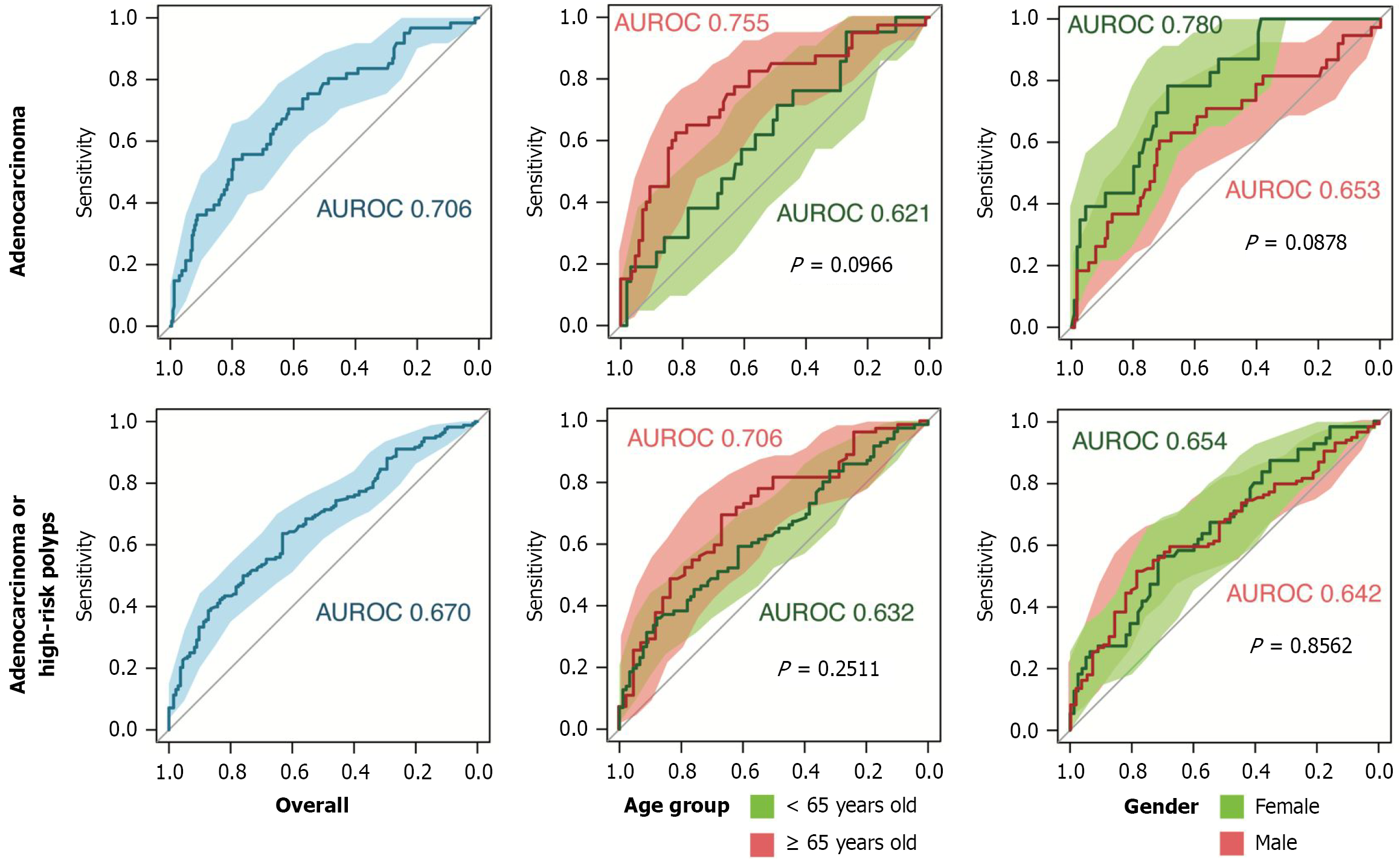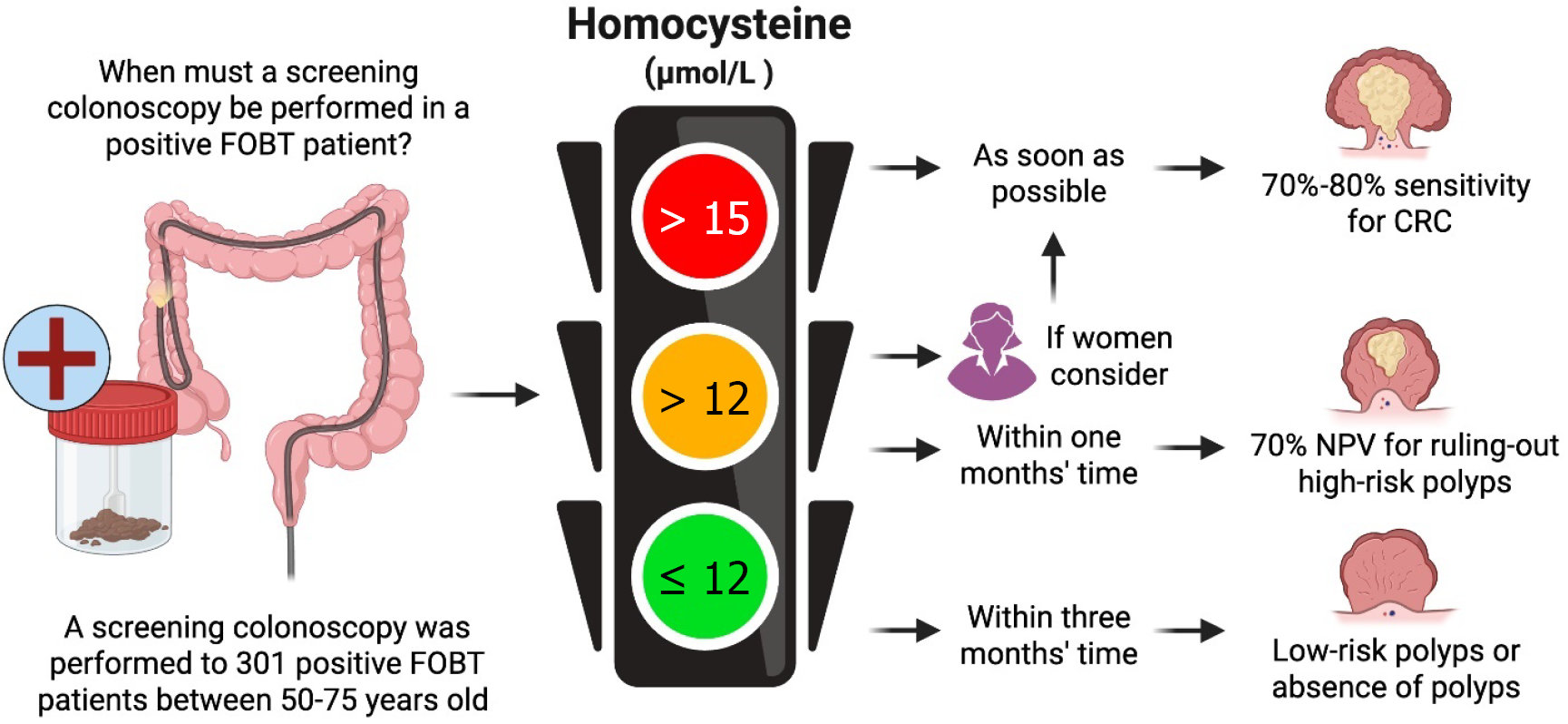Copyright
©The Author(s) 2025.
World J Gastroenterol. Sep 14, 2025; 31(34): 109718
Published online Sep 14, 2025. doi: 10.3748/wjg.v31.i34.109718
Published online Sep 14, 2025. doi: 10.3748/wjg.v31.i34.109718
Figure 1 Visual summary of the study’s procedures.
FOBT: Fecal occult blood test.
Figure 2
STARD flowchart of patient enrollment and cohort classification.
Figure 3 Homocysteine levels according to age and sex.
A: Per-age sub-analysis; B: Per-gender sub-analysis.
Figure 4 Receiver operating curves for precision identification of risk lesions or adenocarcinoma.
AUROC: Area under the receiver operating characteristic curve.
Figure 5 Serum homocysteine traffic light triage system for prioritizing colonoscopy in fecal occult blood test-positive patients.
FOBT: Fecal occult blood test; CRC: Colorectal cancer; NPV: Negative predictive value.
- Citation: Cano FX, Duque JM, Seoane L, Puga-Tejada M, Espinoza de los Monteros A, Bermeo P, Junquera E, Pérez D, Martin-Delgado J, Santelli M, Pérez C, Pérez Rivera FJ. Serum homocysteine-based traffic light triage colonoscopy screening in colorectal cancer at-risk patients: A prospective cohort study. World J Gastroenterol 2025; 31(34): 109718
- URL: https://www.wjgnet.com/1007-9327/full/v31/i34/109718.htm
- DOI: https://dx.doi.org/10.3748/wjg.v31.i34.109718













